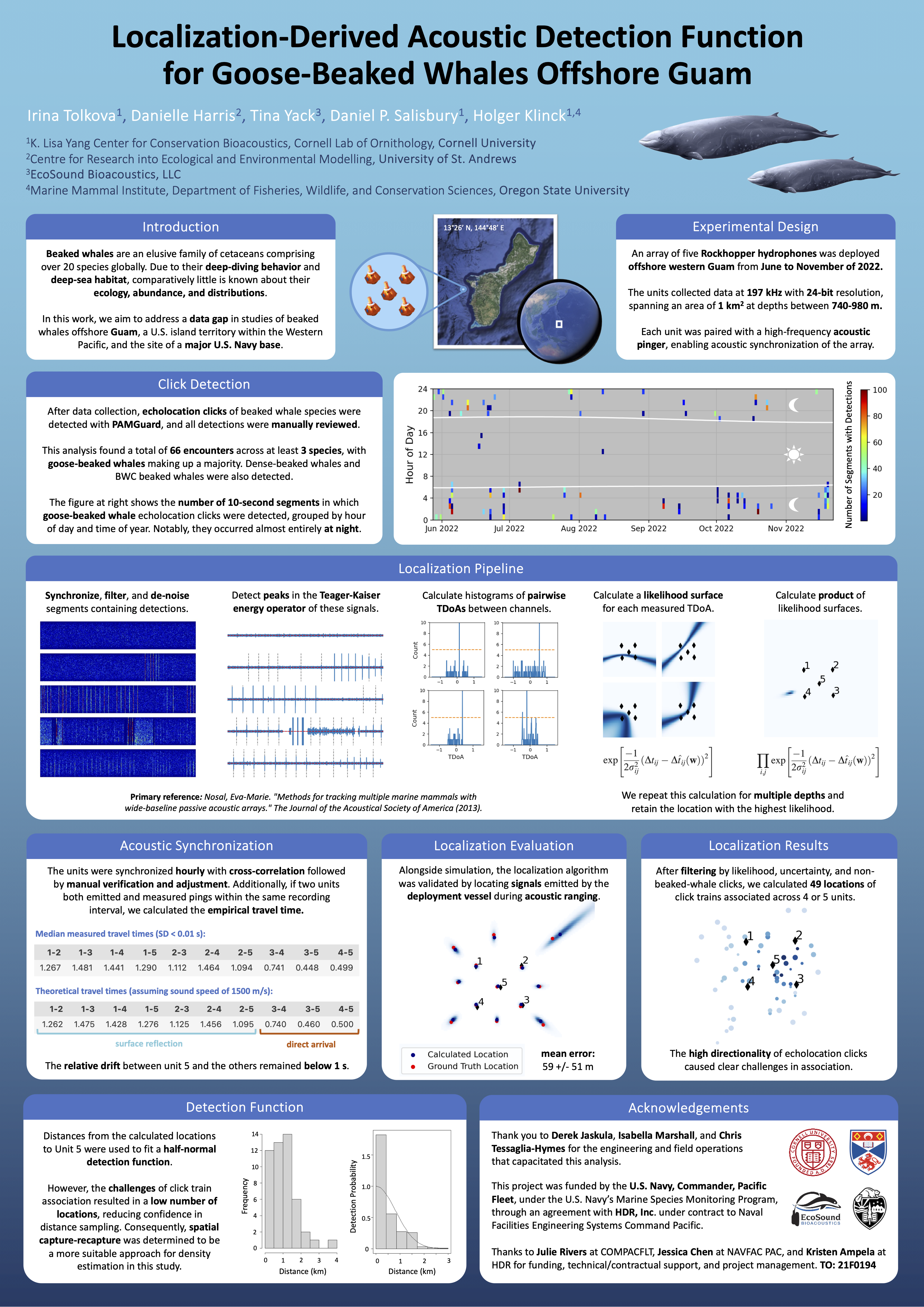Localization of Beaked Whales Offshore Guam
This project is a contribution to a report for the U.S. Navy Marine Species Monitoring in the Mariana Islands Archipelago. Preliminary results were presented at the International Bioacoustics Congress (IBAC) in December 2023, followed by a poster presentation at the Detection, Classification, Localization, and Density Estimation (DCLDE) of Marine Mammals with Passive Acoustics Workshop in June 2024.

This collaborative project aimed to characterize Cuvier’s beaked whale (Ziphius cavirostris) abundance with a hydrophone array deployed offshore Guam. Beaked whales, a family of cetaceans comprising about two dozen species, are seldom seen due to their elusive deep-diving behavior. Historically, beaked whale strandings were rare; however, stranding rates have increased greatly since the 1960s, with over a hundred mass stranding events reported between 1960 and 2004. Furthermore, such events have repeatedly coincided with nearby naval exercises — specifically, with the use of mid-frequency active sonar (MFAS) — raising concern about the damaging impact of sonar on beaked whales and underscoring the need for ecologically-informed protective measures. While beaked whales are difficult to observe visually, they emit echolocation clicks during foraging, enabling the use of acoustics as a proxy for presence. From June to November of 2022, five Rockhopper hydrophones recorded continuously offshore western Guam, the site of a major base of the US Navy. Using PAMGUARD, our collaborators automatically detected and classified echolocation clicks for Cuvier’s beaked whale over the six-month deployment. Using pingers associated with each unit, I quantified clock drift, measured empirical travel times, and synchronized the five channels for intervals containing beaked whale detections. Next, I implemented time-difference-of-arrival-based likelihood-surface localization, obtained a relative spatial distribution of beaked whale activity, and calculated a detection function for use in distance sampling.
